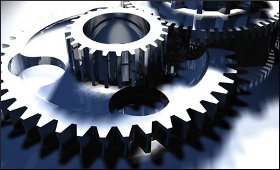|
|
|

|
Manufacturing's share in GDP on decline
|
|

|
|
| Top Stories |
 |
|
|
|
SME TImes News Bureau | 13 May, 2013
The share of manufacturing in India's gross domestic product has been coming down, declining to 15.2 percent in fiscal 2012-13 and is expected to fall below 15 percent in the current financial year since the sector is facing slowdown and unutilised excess capacity, an ASSOCHAM study has cautioned.
The drop in the share of manufacturing has come about in the backdrop of the government aiming to bring its contribution to 25 percent of the total economic activity by 2020, but the trend is certainly moving in the reverse direction in line with the decelerating agriculture sector, the ASSOCHAM paper said.
Manufacturing which has the potential of creating millions of jobs and bringing development to several backward regions of the country could contribute 15.2 percent to the Indian economy growing by just about one percent in FY 2012-13. Its share in GDP in 2010-11 was 16.2 percent and 15.7 percent in the fiscal 2011-12.
"This is despite the fact that the government has been insisting on taking this share to 25 percent and major initiatives were announced to make manufacturing vibrant part of the economy, which depends pre-dominantly ( as much as 60 percent) on services. Depending too much on services is not good for India because our manufacturing could not scale upto the global standards in the first place," the paper noted with concern.
In line with the laggard performance of the manufacturing the share of total industrial output in the GDP has also come down from 28.2 percent in 2010-11 to 27 percent in 2012-13. Agriculture, as it is, has been giving the least to the country's total economic output at just about 13.7 percent. The trend has been showing a falling curve from 14.5 percent about two years ago.
"The serious consequence of dropping agri output and its contribution to the GDP is further displacement of people in the agrarian sector. Well over 60 percent people depend on agriculture and their share in the GDP cake is limited to just about 13.7 percent. This is a serious disequilibrium and is anything but inclusive growth, which will remain a mere slogan if urgent measures are not taken to shift people away from agriculture sector.
"However, the problem arises as to where to shift these surplus manpower because the biggest potential to absorb such workforce is the manufacturing, which itself is battling. More than 50 percent of the 22 industry segments have shown massive degrowth in March displacing a huge number of people in the process," the chamber paper said.
The other problem for the manufacturing has been a big setback for exports which find market for the industrial products in the overseas markets.
As per analysis of the disaggregate date made available till December, 2012 from April, exports to European Union and Asian countries has suffered a major setback. While exports to EU, accounting for 16.3 percent in India's merchandise exports, declined by 11.2 percent, those to Asian countries, (excluding Japan) with a share of 28.1 percent, contracted by 8.4 percent during April-September 2012.
Infrastructure bottlenecks and regulatory hurdles for mega projects are also hindrances in taking leap forward in industrial activity.
Rightly, Governor of the Reserve Bank of India D Subbarao has observed that there is over-capacity in the industry and no fresh investment can take place unless full capacity is utilised, which is again a function of consumer confidence, demand and employment.
|
|
|
| |
|
|
|
|
|
|
|
|
|
|
|
|
|
|
| |
| Customs Exchange Rates |
| Currency |
Import |
Export |
US Dollar
|
₹91.25
|
₹89.55 |
UK Pound
|
₹122.85
|
₹118.85 |
Euro
|
₹107.95
|
₹104.3 |
| Japanese
Yen |
₹59 |
₹57.1 |
| As on 29 Dec, 2025 |
|
|
| Daily Poll |
 |
 |
| What is your biggest hurdle to scaling right now? |
|
|
|
|
|
| Commented Stories |
 |
|
|
|
|
|
| |
|